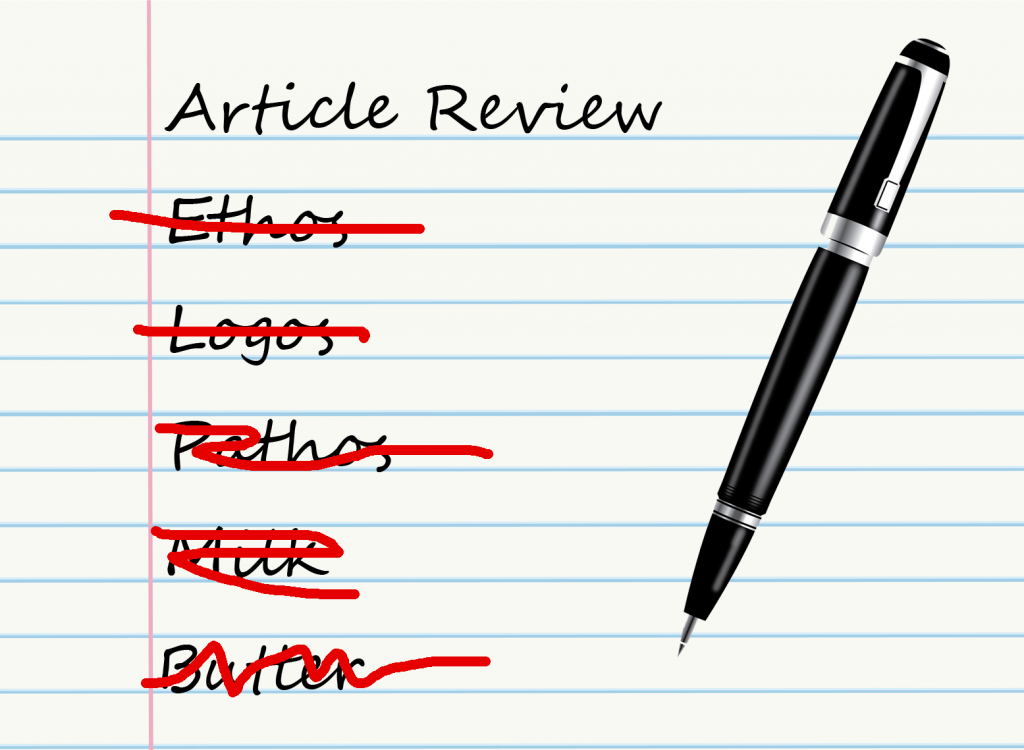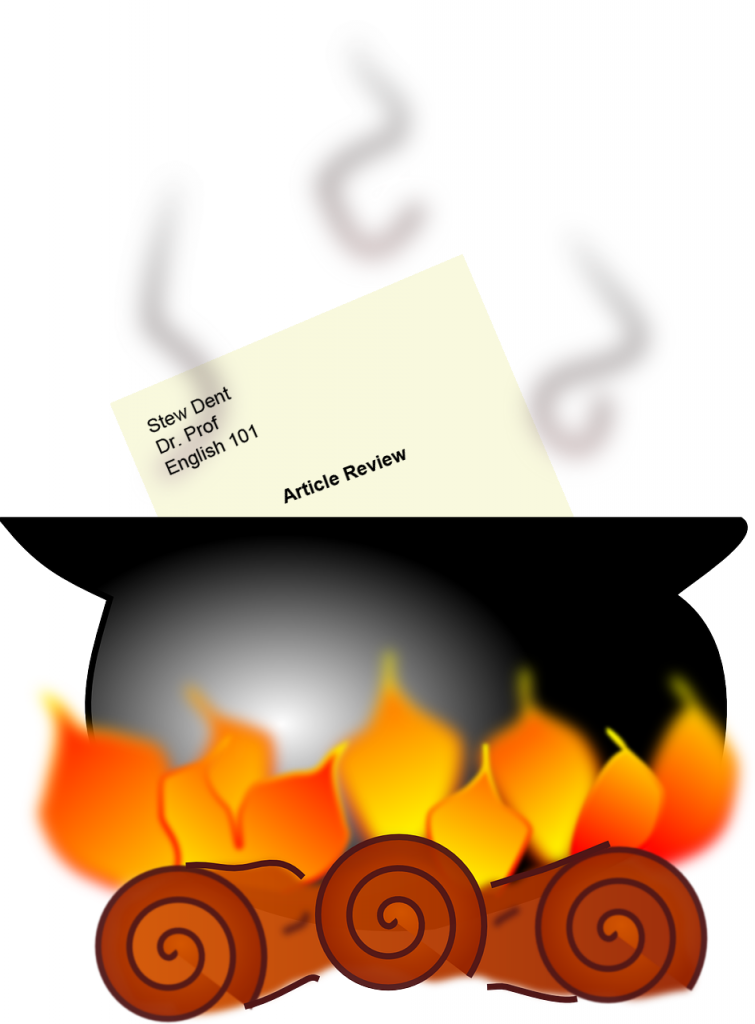Don’t know how to write an article review? Don’t panic—it’s easier than you think.
Even if you’ve never written an article review before, the skills you’ve gained writing other types of essays will come in handy. Expository, descriptive, analytical, and argumentative essays have all prepared you to write an article review.
Even if you haven’t had much practice in these other areas, you can still write a rock-solid article review with a little know-how.
What is an article review, then? In a nutshell, it’s your chance to finally criticize someone else’s work. In this post, I’ll help you figure out what this type of essay is all about, and you’ll get the best recipe for how to write an article review the right way.
What Is an Article Review, and What Isn’t It?
Many students are familiar with argumentative essays, and sometimes it’s difficult to shift focus from this style. An article review is like an argument because you’ll have to take a position on the article while not getting caught up in the issue at hand.
When reviewing an article, you’re not siding with or against the author’s point of view.
If you start writing about why you agree or disagree with the author’s stance, then you’re no longer writing an article review—avoid this pitfall at all costs!
Your main goal: figure out whether the article is any good. Tell your audience whether the article’s argument is valid. Then say why or why not.
To start, you’ll need a list of items within an article that you can criticize.
Shopping List
These will be the ingredients for your Article Review recipe. Each focuses on the article’s quality and the author’s approach.
Author credentials, aka ethos
Who is the author, exactly? What business does she have writing on the subject? Does she have an advanced degree? Has she conducted research or work in her field? Someone who builds Lego models for a living (which is awesome, by the way) probably isn’t an authority on astrophysics.
Need help finding an author’s credentials? When looking for information about an author, Google is your friend.
Appeal to logic, aka logos
Appealing to logic makes for strong arguments. Does the author rely on sound research to back up her claims? Does she use statistics and figures as proof to support her ideas? Does she provide a list of references to validate work in her field? Are her sources trustworthy?
If you can answer “yes” to the above questions, then the article is logically strong.
An author should also avoid bias and logical fallacies. In argument essays, you’ve probably had to present counterarguments to consider someone else’s ideas on an issue.
A good article will do the same—an author should consider the different approaches to an issue and analyze them, seeing how they stack up against her own claims and data. She should avoid generalizations and be open and fair to other ideas and viewpoints.
Appeal to emotion, aka pathos
Facts aren’t everything. An author cannot sway the audience’s opinion without some flavor. Including anecdotes, personal stories, and even a second-person perspective can help her argument.
Does she only seem interested in giving her opinion, or does she try to reach the audience on an emotional level? Is her approach subtle or dramatic? Pretend you’re the intended audience—how effective is the approach and why?
Audience awareness is vital to pathos. If you can identify the author’s target audience, you can figure out if the writing is effective.
Does the article address a specific group or a broad audience? Is it full of lingo that only a few will understand, or is it accessible to us “common folk”? Whatever language the author uses, you’ll want to say whether it’s effective for the audience.
Great examples include Dr. Martin Luther King Jr’s Letter From Birmingham Jail and this video in which Neil DeGrasse Tyson explains black holes.
King writes to a specific audience—his fellow clergymen—and appeals to their religious affiliation and moral views. DeGrasse Tyson explains complex scientific ideas so that a broad audience can easily understand them.
Balance
If an author only relies on logic, her article will be boring and robotic. If she only uses anecdotes and personal stories, then she’s not backing up her claims with real evidence that can be tested and measured.
Every good argument needs a solid balance between both logical and emotional appeals.
Healthy skepticism
Being critical in your article review doesn’t mean writing a scathing review.
If the article is well-written, well-argued, and valid, your essay will be positive, which is great. Always focus on the author’s strengths and weaknesses—and be fair when writing about either.
Let’s Get Cooking: How to Write an Article Review the Right Way
Now that you have the ingredients on how to write an article review, following the recipe is next. Just like cooking at home, if you follow a recipe, you should get good results in the end.
Let’s break down, step-by-step, this essay recipe on how to write an article review.
Intro (1-2 paragraphs)
Briefly describe the issue the author is dealing with, and give your reader some context and background on it. You can discuss whether this issue is being hotly debated in the media or whether it’s more obscure but still important.
Ultimately, you want construct your thesis statement here, providing a short but specific assessment of the article’s overall quality. Then write a sentence or two giving a brief summary of the reasons that the article is strong or weak.
Body (3-7 paragraphs)
The author
Use the author’s credentials to note whether he or she is an authority on the subject. Focus on the author’s background, relevant work history, and governmental, university, and corporate affiliations.
Is there any controversy surrounding the author’s work or personal life that compromises his or her reputation? If there are, how do these items affect the article’s validity?
The content
Summarize the article’s content. Briefly cover the position the author takes on the subject, and answer these questions:
- What are the author’s main claims?
- What types of evidence does the author use to support these claims, and is the evidence strong?
- Who is the intended or target audience?
This section is only a summary—it should be 1-2 paragraphs long—and it sets up your analysis of the article’s content. You’ll go into detail about each of these items in the next paragraphs, so don’t spend too much time here.
Your analysis and evaluation
Focus on logos and pathos in your analysis, and also answer these questions:
- How effective is the author’s argument?
- What strengths and weaknesses can you find in the author’s claims and evidence?
- Is there any important information that the author doesn’t consider?
- What questions does the article fail to address?
- Is the article current, or does it contain outdated or incorrect information?
- Does the author consider any opposing arguments, or does he or she only rely on resources that agree with his or her views?
Be sure to discuss the article’s structure and style too. Is the article well-organized? Is the language more accessible to a broad audience or just specialists in the author’s field? Is the language easy to comprehend or too complex?
Conclusion (1 paragraph)
To write a good conclusion, review your main ideas and reinforce your thesis. Summarize your main claims and the reasons that the article is strong or weak in its approach. Say whether the author offers standard arguments on the topic or has new insights and interpretations.
Then, finally, close with why this approach is ultimately effective or ineffective, and what impact (if any) the author’s ideas will have on the target audience.
Soup’s On!
Now that you have the ingredients and recipe for how to write an article review, you can get started. Just like any essay in which you argue your ideas, be sure to back up your claims with evidence.
Use argumentative strategies—such as direct quotes, summary, and paraphrasing—to provide examples of the article’s strengths and weaknesses.
And don’t be afraid to use your unique style and voice in your writing. The recipe is just a guide to help you shape the essay.
Let your writing style flourish, and definitely check with your professor about any specific rules you’ll need to follow when writing this type of essay for your class.
See? It’s not so bad.
Don’t forget that our awesome Kibin editors can proofread that article review when you’ve finished a draft.
Good luck, writers!




